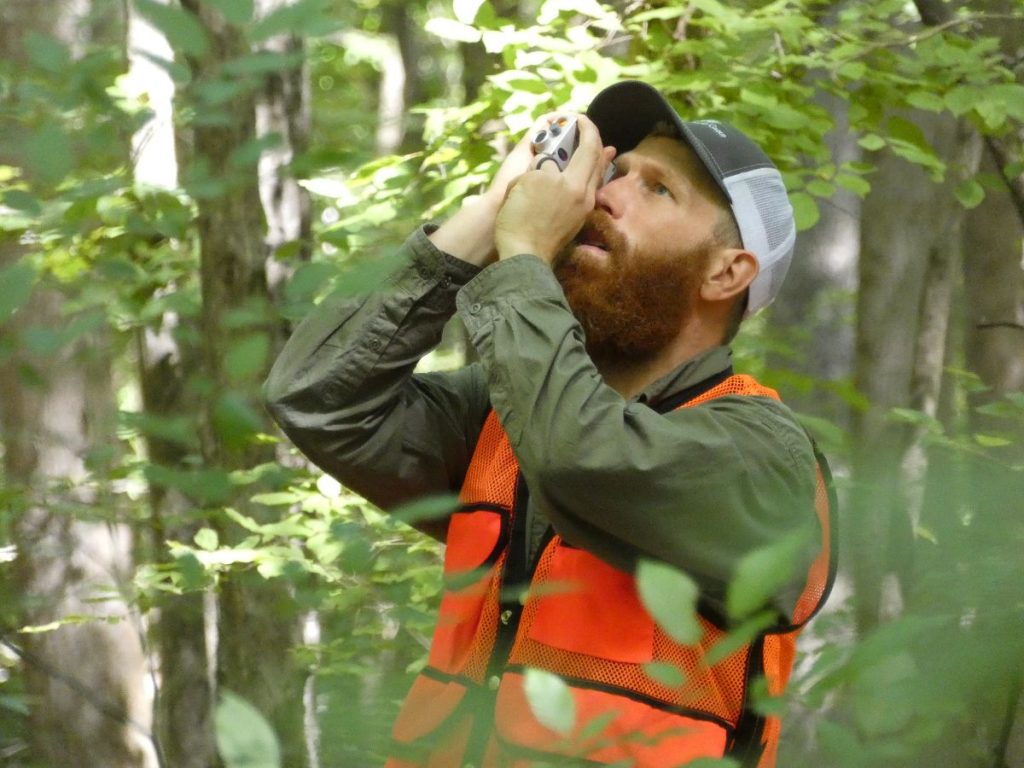Forest Inventory: Accounting for a nearly every tree
In the first half of 2023, our office is reflecting on some of the major accomplishments coming out of our 2017-2022 5-Year Strategic Plan. This plan has been a pivotal one for the Forest. As we move to advance these goals and accomplishments into our next strategic plan, we thought to share some of our highlights with you.
Goal 1. Stewardship for Long Term Sustainability
Objective A. Diversify revenue sources through emerging opportunities for fundraising and exploration of potentially novel market values for Duke Forest resources; further reduce reliance on timber as a revenue source given current age-class distributions and future market uncertainties.
Action A. Maintain a sustainable timber management program for its teaching, research, and demonstration value, as well as for forest health and resiliency; investigate opportunities to decrease reliance on it as a source of revenue, especially given current age-class distributions and future market uncertainties.
Did you know that, as a part of our stewardship objectives and sustainable timber management program, our staff has conducted a comprehensive forest inventory every ten years? To manage its resources well, we must continually understand what types of trees are predominant in each compartment along with their height, mass, and age class. How do we account for the Forest’s trees as stands grow and adapt to differing environmental conditions (invasive species, nutrient depletion, deer browse, climate change, etc.) and/or management conditions (invasive species management, prescribed burns, pre-commercial thinning, and timber harvests)? To meet our stewardship goals, to demonstrate a sustainable timber management operation, and to enhance the Forest’s teaching and research potential, we must be able to account for and share information about all our trees across 7,100 acres. Does it sound like a big task to you? It is!
By adopting new technologies, we have begun to make the inventory process more accurate, more dynamic, and simpler for our staff. In 2019, we began using the continuous forest inventory (CFI) methodology which involves the establishment of permanent plots laid out in a grid across the entire forest. Portions are remeasured in two-year rotations, so the entire forest is measured in a ten-year cycle.
Three interns installed 150 of these plots at regular intervals across our 7,100 acres over the course of a long, hot summer. Their efforts along with new types of analyses by our Forest Supervisor Tom Craven have already improved our ability to compare information across inventory periods, to create a body of knowledge that demonstrates the effects of management and environmental changes on individual trees and the forest as a whole, and to produce data that are easily compatible with the widely used Forest Vegetation Simulator.
As we look at successes to inform our next strategic plan, our staff are most proud when we can blend areas of our mission for greater impact. With the new CFI paradigm, it is much easier to share our data with students, teachers, and researchers whether they are on-the-ground here in Durham or across the world, thus enhancing our primary teaching and research goals.

height of trees at a sampling location in 2019.
To read the original article from our 2019 LOG, see below.
Management Spotlight: Forest Inventory
This story appeared in the 2019 Duke Forest LOG
Every ten years, Duke Forest performs a forest inventory to better understand the composition of the Forest and to ensure that we are responsibly managing the resource over time. Staff use the data collected to estimate tree volume, growth, and regeneration, and to assess issues that affect the Forest such as invasive plants and deer browse. The numbers we derive for volume and growth allow us to set an annual benchmark for sustainable harvest levels within our timber management stands, while the regeneration data help us learn about the young forest growing up in places we do not actively manage.
This year, we implemented a new methodology known as a continuous forest inventory (CFI). After discussions with managers at other educational research forests, colleagues in the forest industry, and forestry professors, we realized that a CFI has several advantages. First and foremost, a CFI requires the installation of permanent plots, which vastly improve the ability to compare information across inventory periods. It allows each round of data collection to easily build upon the past, creating a body of knowledge that more clearly demonstrates the effects of management and environmental changes on individual trees and the forest as a whole.
The CFI protocol also uses fixed-area plots, which greatly simplify data analysis and facilitate use of the inventory for remote-sensing teaching and research applications. In addition, a CFI produces data that is easily compatible with a widely applied Forest Vegetation Simulator (USDA Forest Service). This allows Nicholas School students to use Duke Forest data to learn about forest growth and yield and to generate a Duke Forest-specific model, which can be updated and refined during subsequent data collection periods.
Getting started with our new CFI methodology was no easy task! We had three exceptional interns who spent the entire summer installing 150 permanent CFI plots. This required navigating to a designated location, installing a center point, permanently marking trees within the plot, mapping the location of each tree in the plot, and then collecting data. At each plot, interns measured the diameter, height, and form of each tree and recorded additional information about ground cover, invasive species, and deer browse.
Now that the plots are installed and initial measurements have been taken, a portion of the CFI plots will be resampled every two years. The trees within the plot will be re-measured and forest changes will be tracked over time. Duke Forest staff have moved into the number crunching phase, and we are excited to see the first round of results from our new CFI program.







